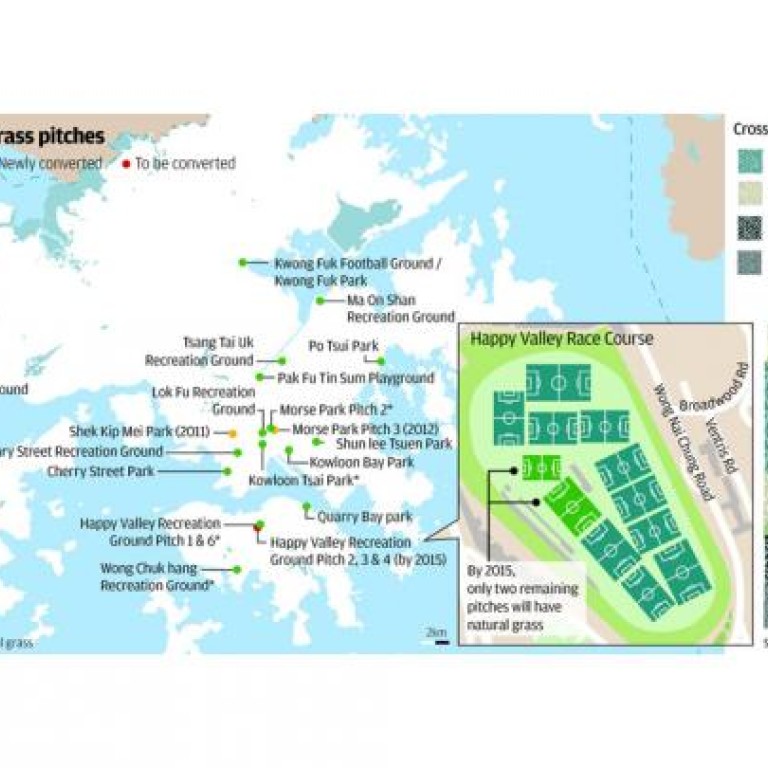
Health reasons to keep off the artificial grass, experts say
Cheap alternative to fresh green lawns spells a host of environmental risks, particularly to children and sports players, experts warn
Replacing natural grass pitches with artificial turf may reduce maintenance costs but it comes with a cost to public health, environment experts warn.
Heavy metals such as lead and zinc are often found in the rubber layer of the turf and its use can drive up temperatures in already steamy urban hot spots, they say.
These concerns and others, such as increased run-off during rain and the energy burned up in making the turf, have led to bans on its use in places including the United States and Australia.
But in Hong Kong, the government has been quietly replacing natural grass turf at football fields, basketball courts and other recreational facilities with the artificial variety since 2010.
It is favoured because its durability helps satisfy public demand for more pitches and repairs cost less than a fifth of those for natural turf. Besides, scientific studies have concluded that the health risks for players are not significant.
However, University of Hong Kong grass and soil specialist Professor Jim Chi-yung said the rubber would become pulverised and could be inhaled. "It's particularly harmful to children who like touching and putting things into their mouths," he said.
Horticulturalist Lam Tak-chak said heavy metals often found in the rubber layer were made from used tyres.
The plastic grass, being non-biodegradable, would also add to the waste problem when it is discarded in landfills.
Glendale city in California has banned artificial turf since 2011, while Claremont in Western Australia banned its use on public and private verges last year.
Their officials were concerned about the high concentration of lead in the rubber, the turf's lower water-holding ability that led to more run-off, and the amount of energy required to produce it.
In New Jersey, the Department of Health recommended the closure of three sport fields in 2008 after finding lead in their artificial turfs.
In Hong Kong, the observed that rubber crumbs and "grass" fibre from government-managed turf pitches at the Jockey Club's Happy Valley racecourse had spread to other areas, including the entrance and staircases leading to the football pitches.
Even on a cloudy day, the temperature of the artificial turf was about 2 degrees Celsius higher than that of a natural grass pitch next to it, the found in its measurements.
Jim said this was because the soil of the grass absorbed heat, whereas the asphalt paving beneath the artificial turf did the opposite. Natural grass also refreshed the air as the soil absorbed pollutants, which stayed on the surface of the fake grass.
Natural grass pitches could be made more durable if the government improved its knowledge and technology, he said.
"We explore ways to plant on buildings' walls and roofs because there's limited green space on the ground; now they are taking natural grass away," he said. "It's just hard to comprehend."
The Environment Bureau said it was not consulted on the policy to replace grass pitches. The Home Affairs Bureau declined to say if it would review the policy. The Architectural Services Department said the turf used in public projects met standards specified by international football body Fifa, although this did not require tests for heavy metals.


